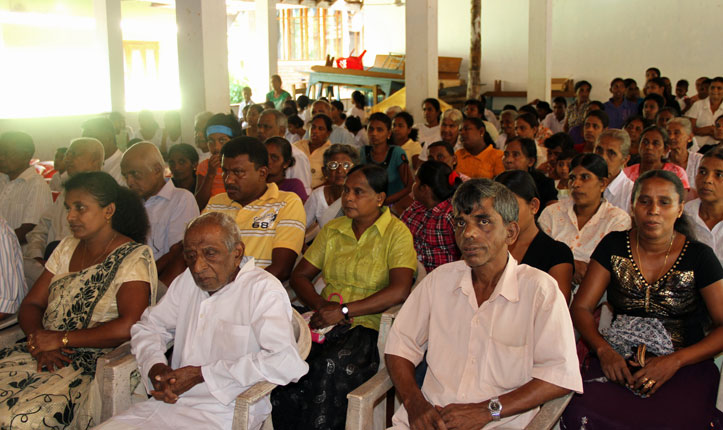A community centre for the people of Thalalla
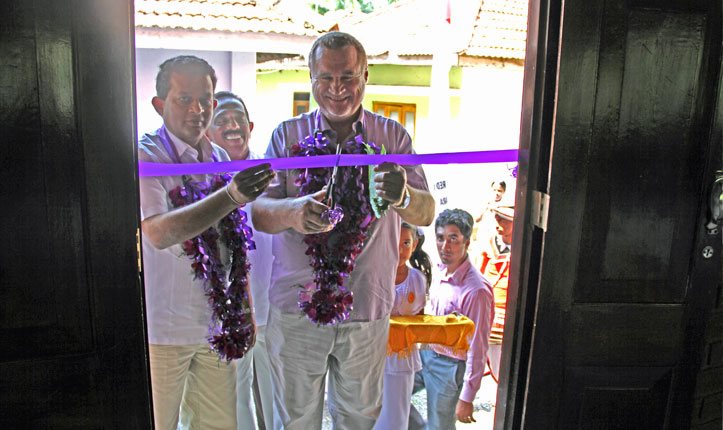
“This is an effort to continue the ‘Tam pita vihara’ building tradition” said the architect. He added that old examples of these buildings consisted of a timber floor on stone pillars, an effective method for keeping dampness and termites away from the timber. “This contemporary interpretation is intended to withstand flooding” explained Archt Wickramage.
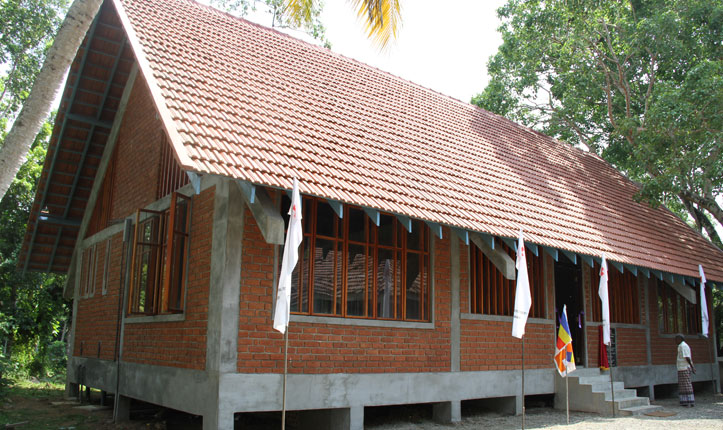
With limited space allocated and budget constraints made allowance for only a one storey building in the space intended for two storeys. Thus the Architect introduced a steeply sloping roof at a 45 degree angle, leaving room for possible later expansion through an additional mezzanine floor. Accordingly, a timber deck or a pre cast concrete slab could easily facilitate expansion across the community centre’s main hall.
The community centre stands three feet above ground level, supported by twelve concrete stilt columns. Pre-cast NERD concrete slabs have been laid to create the floor for the building while concrete pillars and angular roof beams make up its structural skeleton. Six inch bricks were used for the walls with vertically pivoting timber for the windows and doors. Exposed timber rafters can be seen supporting the ceiling-less roof, which is covered with clay Calicut tiles and ridge tiles. (see photo below)
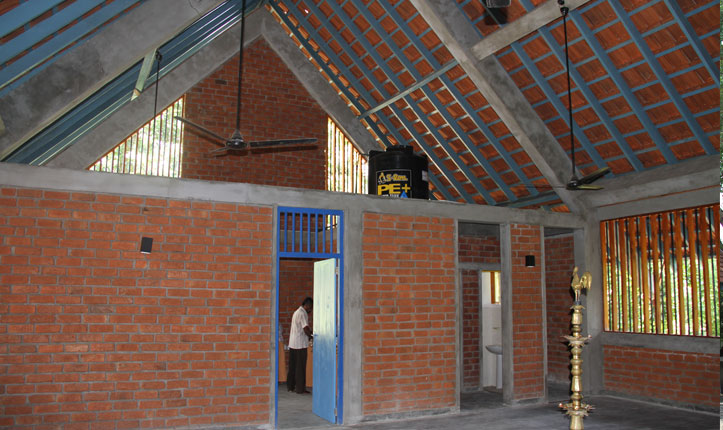
The decision to leave all material in its raw form was taken on site and was unplanned. “I initially wanted to paint the building, and not to have exposed brickwork. Once the contractor started the laying the bricks, it took on a natural beauty,” added Archt Wickramage. The concrete skeleton and roof tiles are left exposed in their raw form. The brickwork and timber have been sealed with a coat of paint and clear varnish. The earthy colours and textured tactile quality left by the exposed material have been contrasted with bright red, blue and green doors and turquoise blue rafters create cheerfulness with splashes of brilliant colour.
Shaded by the branches of the temple’s sacred Bo tree, the community centre blends in with the surrounding temple buildings, while reaching to the same height as the Budu Madura (image house). The windows on either side and the spaciousness of the main hall allow penetration of natural daylight into the centre’s interior leaving room for ample cross ventilation. Additionally, artificial lighting has been supplemented in the tradition of ‘vesak lanterns’ in the spacious double height multi-purpose hall.
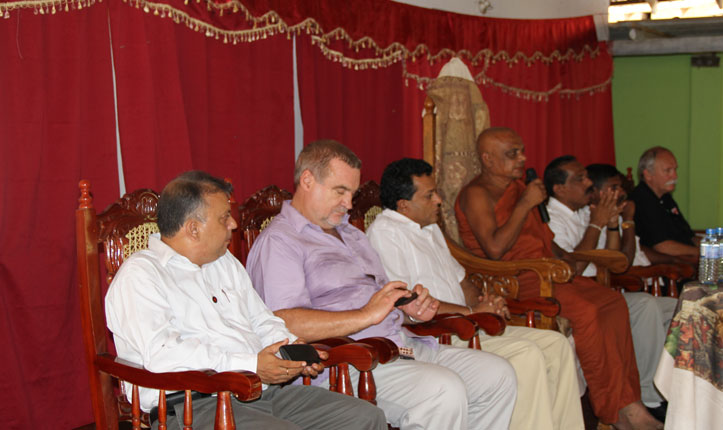
I was with the President of the Sri Lanka Red Cross Jagath Abeysinghe and the Vice President of SLRCS Bharatha Jonikkuhewa when we inaugurated the Thalalla Community Centre in Matara district.
We spoke to people from the three surrounding villages who will be using the community centre and all made similar comments is they “love the look of the outside and the inside of the building” and the village chief said they were so pleased to have a place to meet and run community projects.
So the sun is finally setting on a seven year and a quarter year Red Cross tsunami recovery operation in Sri Lanka as we finally finish our last few projects.
